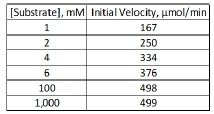The catalytic constant, denoted as kcat, is a crucial variable in enzyme kinetics, representing the rate constant for the rate-limiting step of an enzyme-catalyzed reaction. This slowest step ultimately determines the theoretical maximum reaction velocity, known as Vmax. It is essential to understand that a reaction cannot proceed faster than its slowest step, which is why kcat is directly linked to Vmax. This relationship holds true particularly at saturating substrate concentrations, where the enzyme is fully occupied by the substrate.
In simple enzyme-catalyzed reactions, three relevant rate constants are typically involved: k1, k-1, and k2. Among these, k2 is generally the rate-limiting step, which means that kcat can be equated to k2. This rate constant is specifically associated with product formation, making it integral to understanding the reaction's dynamics.
The rate law for an enzyme-catalyzed reaction can be expressed as follows: the reaction velocity v is equal to the rate constant k2 multiplied by the concentration of the enzyme-substrate complex. When the enzyme is saturated with substrate, the initial reaction velocity can be approximated as Vmax, allowing for the substitution of kcat in the expression for Vmax. This leads to the formulation of kcat as the ratio of Vmax to the total enzyme concentration.
In summary, the catalytic constant kcat is defined as:
kcat = \frac{Vmax}{[Etotal]}
where [Etotal] represents the total concentration of the enzyme. Understanding this relationship is vital for analyzing enzyme kinetics and predicting reaction behavior under various conditions.


